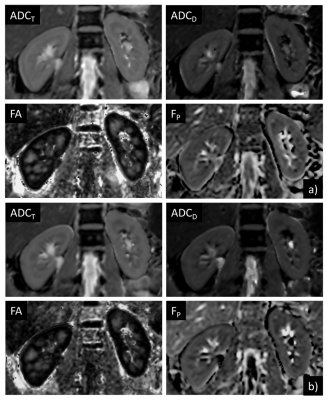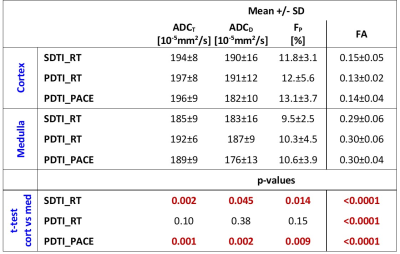Arun Joseph1,2,3, Laila-Yasmin Mani4, Tom Hilbert5,6,7, Thomas Benkert8, Tobias Kober5,6,7, Bruno Vogt4, and Peter Vermathen3
1Advanced Clinical Imaging Technology, Siemens Healthcare AG, Bern, Switzerland, 2Translational Imaging Center, Sitem-Insel, Bern, Switzerland, 3Departments of Radiology and Biomedical Research, University of Bern, Bern, Switzerland, 4Department of Nephrology and Hypertension, University Hospital Bern, Inselspital, Bern, Switzerland, 5Advanced Clinical Imaging Technology, Siemens Healthcare AG, Lausanne, Switzerland, 6Department of Radiology, Lausanne University Hospital and University of Lausanne, Lausanne, Switzerland, 7LTS5, École Polytechnique Fédérale de Lausanne (EPFL), Lausanne, Switzerland, 8Application Predevelopment, Siemens Healthcare GmbH, Erlangen, Germany
1Advanced Clinical Imaging Technology, Siemens Healthcare AG, Bern, Switzerland, 2Translational Imaging Center, Sitem-Insel, Bern, Switzerland, 3Departments of Radiology and Biomedical Research, University of Bern, Bern, Switzerland, 4Department of Nephrology and Hypertension, University Hospital Bern, Inselspital, Bern, Switzerland, 5Advanced Clinical Imaging Technology, Siemens Healthcare AG, Lausanne, Switzerland, 6Department of Radiology, Lausanne University Hospital and University of Lausanne, Lausanne, Switzerland, 7LTS5, École Polytechnique Fédérale de Lausanne (EPFL), Lausanne, Switzerland, 8Application Predevelopment, Siemens Healthcare GmbH, Erlangen, Germany
We implemented diffusion tensor imaging of the kidney based on
prospective acquisition motion correction and free-breathing acquisitions yielding
robust performance and motion-insensitive reliable quantitative diffusion parameters.


